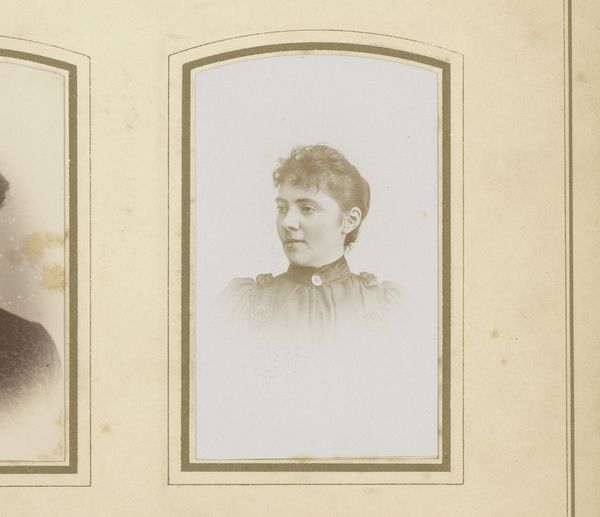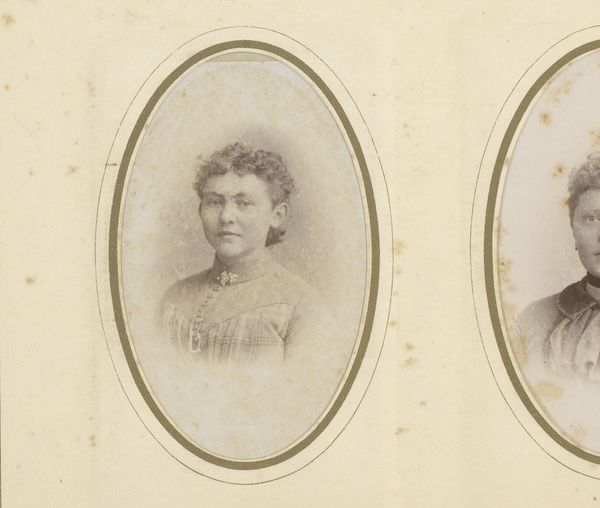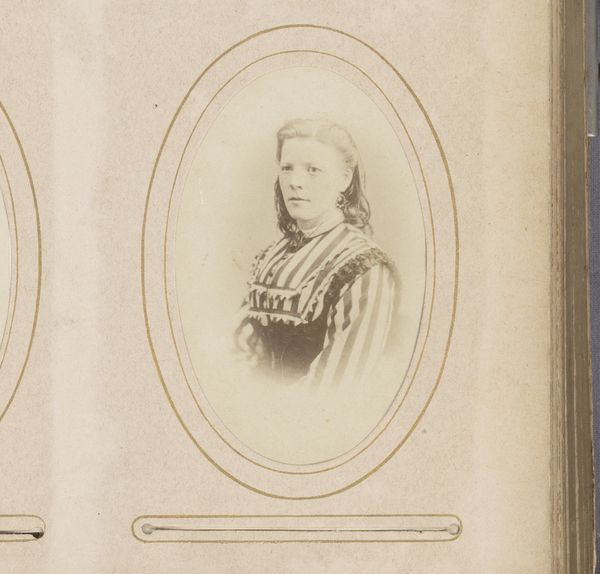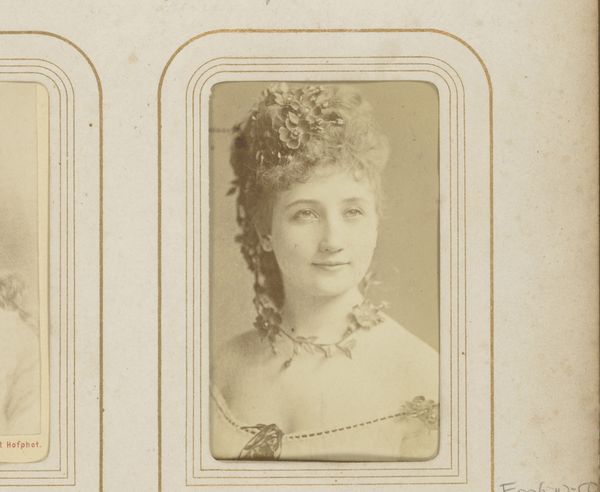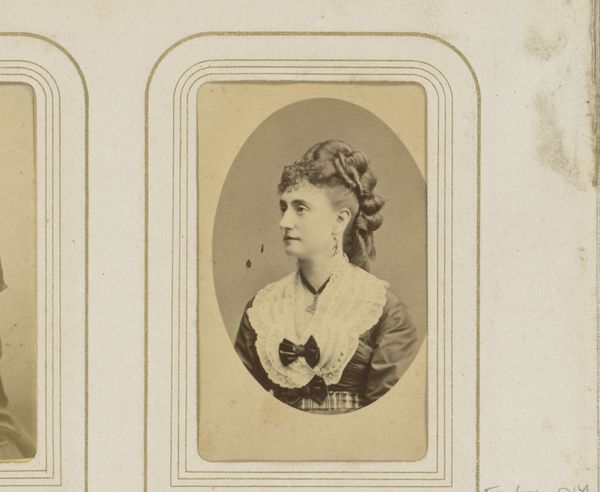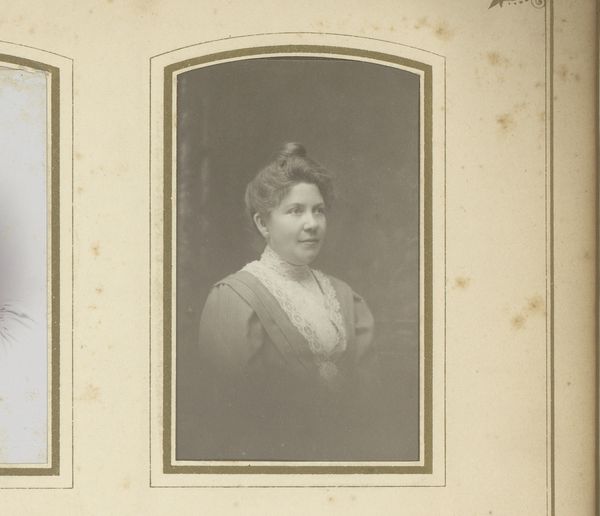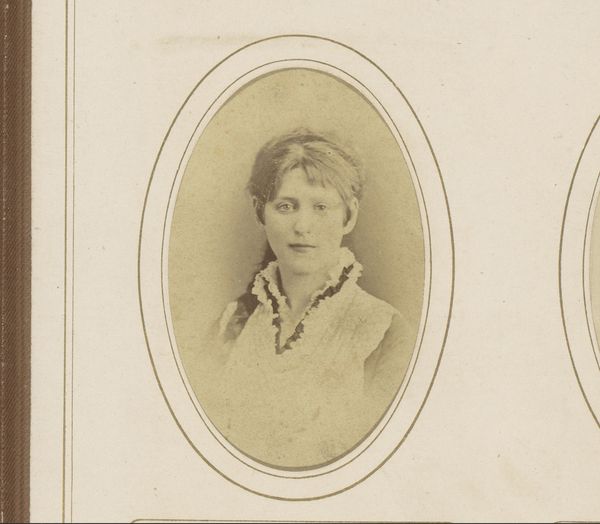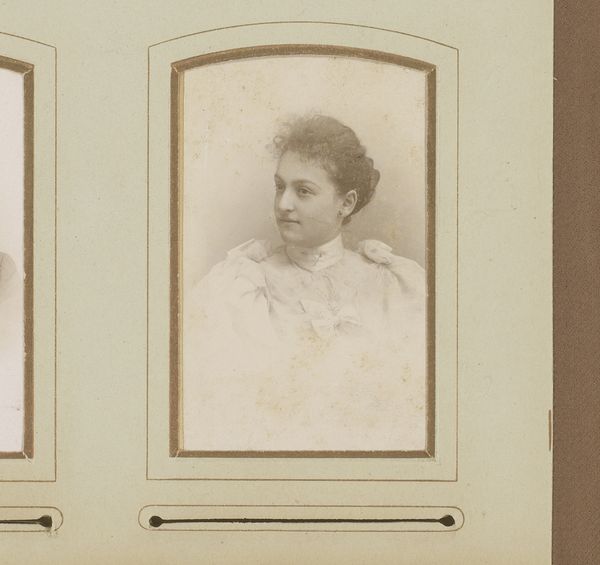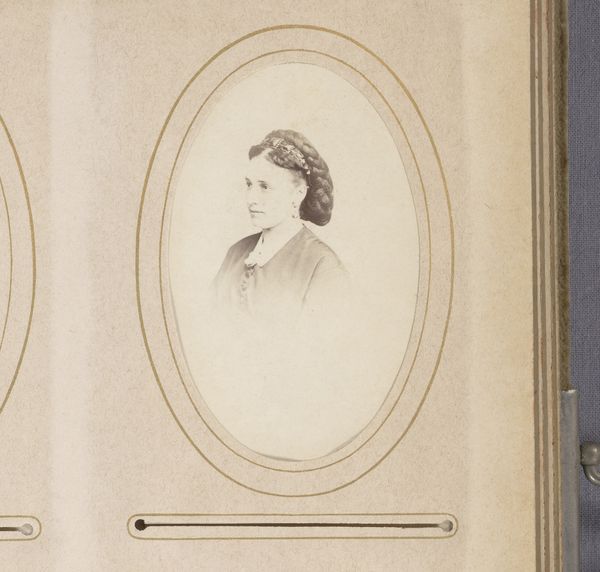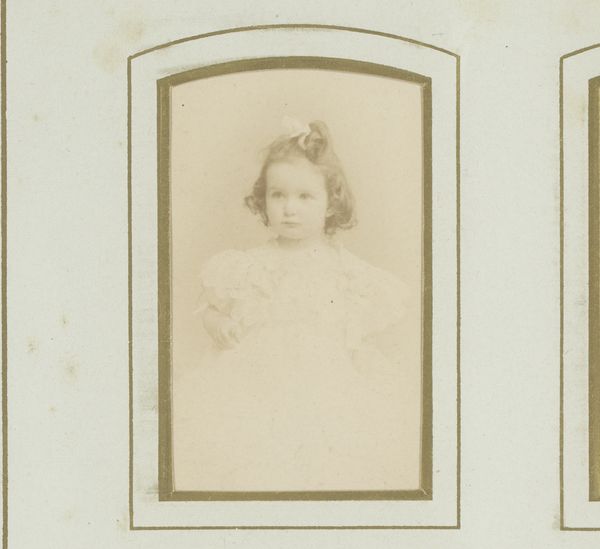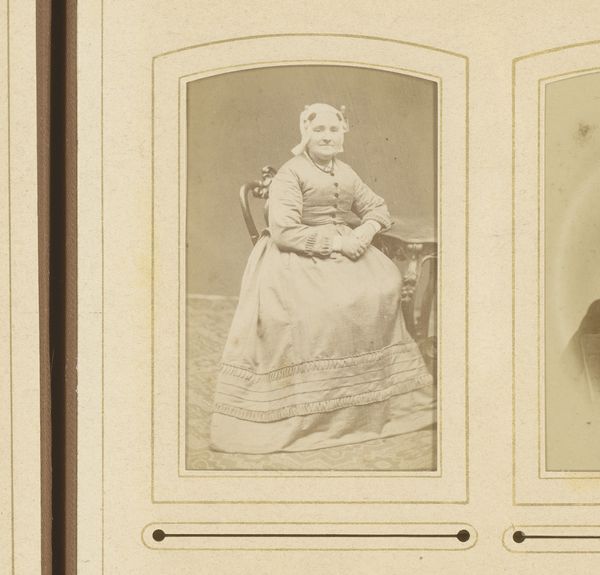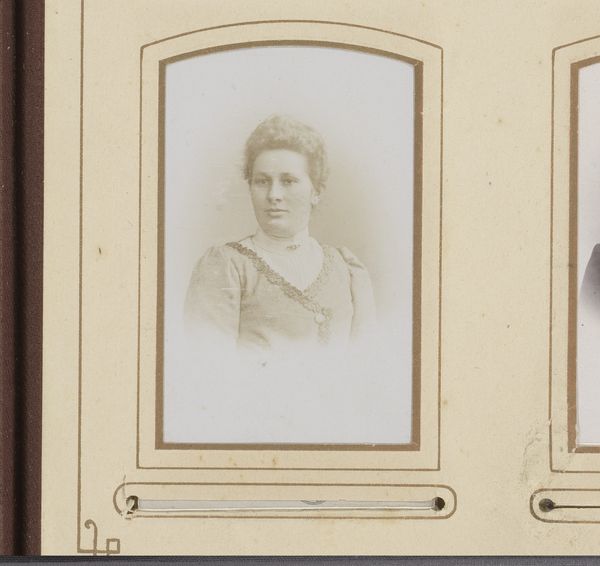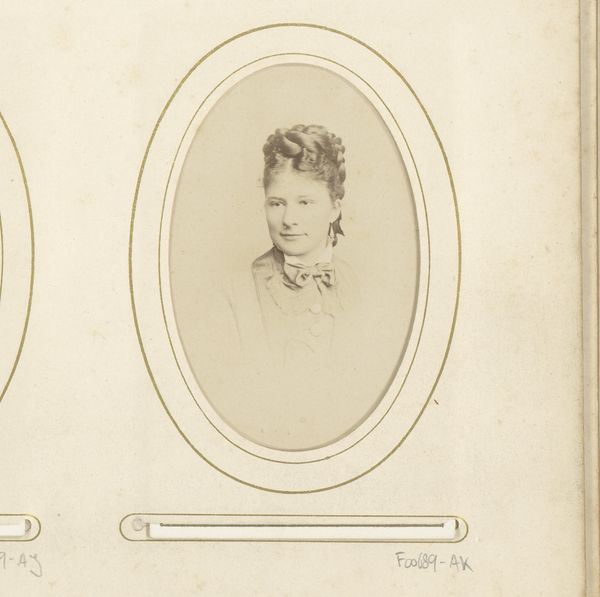
Dimensions: 29.2 × 41.9 cm
Copyright: Public Domain
Curator: Welcome. Today we are considering a photographic album page of albumen prints and collage, created in the 1870s, titled “The Madame B Album,” here at The Art Institute of Chicago. Editor: It's charming. A little melancholic, even. The sepia tones of the portraits, set against these hand-painted, vibrant blue cornflowers…it has a haunting quality. Curator: Yes, notice the repeated motif: three oval portraits, possibly depicting the same woman at different times of her life. Each framed with those delicate cornflowers. Framing and flowers often represent beauty, admiration and memorialisation. Editor: Memorialisation. Right. Given the era, we must think about societal constraints, about class and gender. These portraits, this 'Madame B,' whoever she was, she’s presented through a very specific, almost suffocating, lens of idealised femininity. Is this how she saw herself, or how she was meant to be seen? Curator: A tension, certainly, in considering intention and the imposed. Still, flowers also evoke themes of rebirth and lasting memory, especially in collages made to preserve familial ties. What do you notice? Editor: The formality is striking, but I find it interesting. In an age where women's roles were so tightly defined, was this her act of self-assertion? Arranging and preserving her own image? This artistic arrangement elevates the work beyond mere photographs; it is a commentary. Curator: Perhaps. Flowers also represent fleeting beauty, a sense of transient time. They could symbolize beauty in memory or simply underscore the aesthetic appeal within romanticism and academic art prevalent then. Editor: I see that, and think the contrast of rigid photographic portraits versus the flowing flowers around her might emphasize the very different parts of her identity in bloom. How much did women choose of the self they displayed? Curator: This invites a deeper engagement, doesn't it? To appreciate “The Madame B Album”, we must consider the artistic decisions but also broader questions around self-representation, particularly for women in the 19th century. Editor: Indeed. It reminds us that even within the confines of her time, perhaps Madame B sought a voice, a lasting presence fashioned by her own hand.
Comments
No comments
Be the first to comment and join the conversation on the ultimate creative platform.

